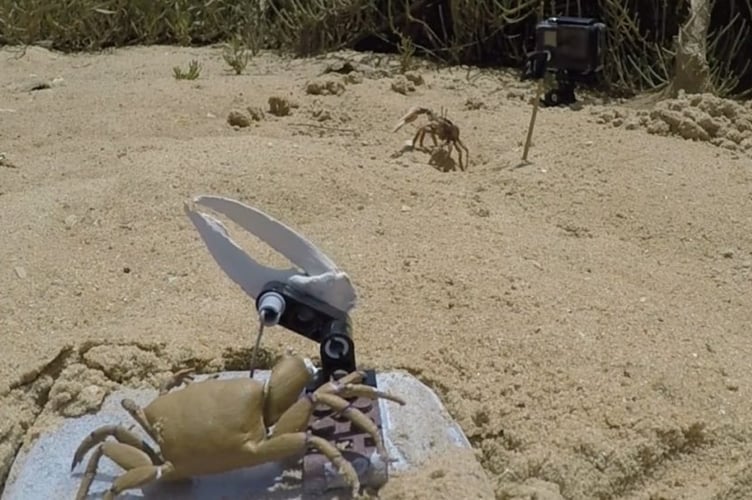Scientists at the University of Exeter have created a robotic crab, nicknamed Wavy Dave, to understand how male fiddler crabs compete in claw-waving contests.
Male fiddler crabs have one oversized claw, and they attract females by standing outside their burrow and waving it.
In the new study which took place in Southern Portugal, Wavy Dave waved its claw on a mudflat teeming with male fiddler crabs.
Scientists found that when the robot was waving, real males waved for longer in response, and they were less likely to retreat into their burrows – especially when the robot had a small claw.
Dr Joe Wilde, the scientist behind the study, said: “We know many animals adjust their sexual displays if rivals are nearby, but less is known about how they react to the actual displays themselves.
“Our findings reveal the subtle ways in which these crabs adjust their behaviour to compete in a dynamic environment, investing more in signalling when it is likely to be most profitable.”
Female fiddler crabs prefer males with a larger claw, and those that wave their claw quickly.

However, some crabs took issue with the robotic intruder.
“The females realised he was a bit odd, and some of the males tried to fight him,” said Dr Wilde.
“One male broke Wavy Dave by pulling off his claw. We had to abandon that trial and reboot the robot.”
Dr Wilde said Wavy Dave began as a “pipedream” during the Covid lockdown.
At the time, Dr Wilde was learning about 3D printing, and he happened to see that someone had created 3D scans of fiddler crabs and made them freely available.
He found a 3D printer to make a model, and taught himself enough robotics to make a crab that waved its claw. He then developed an app to control the crab via Bluetooth signals.





Comments
This article has no comments yet. Be the first to leave a comment.